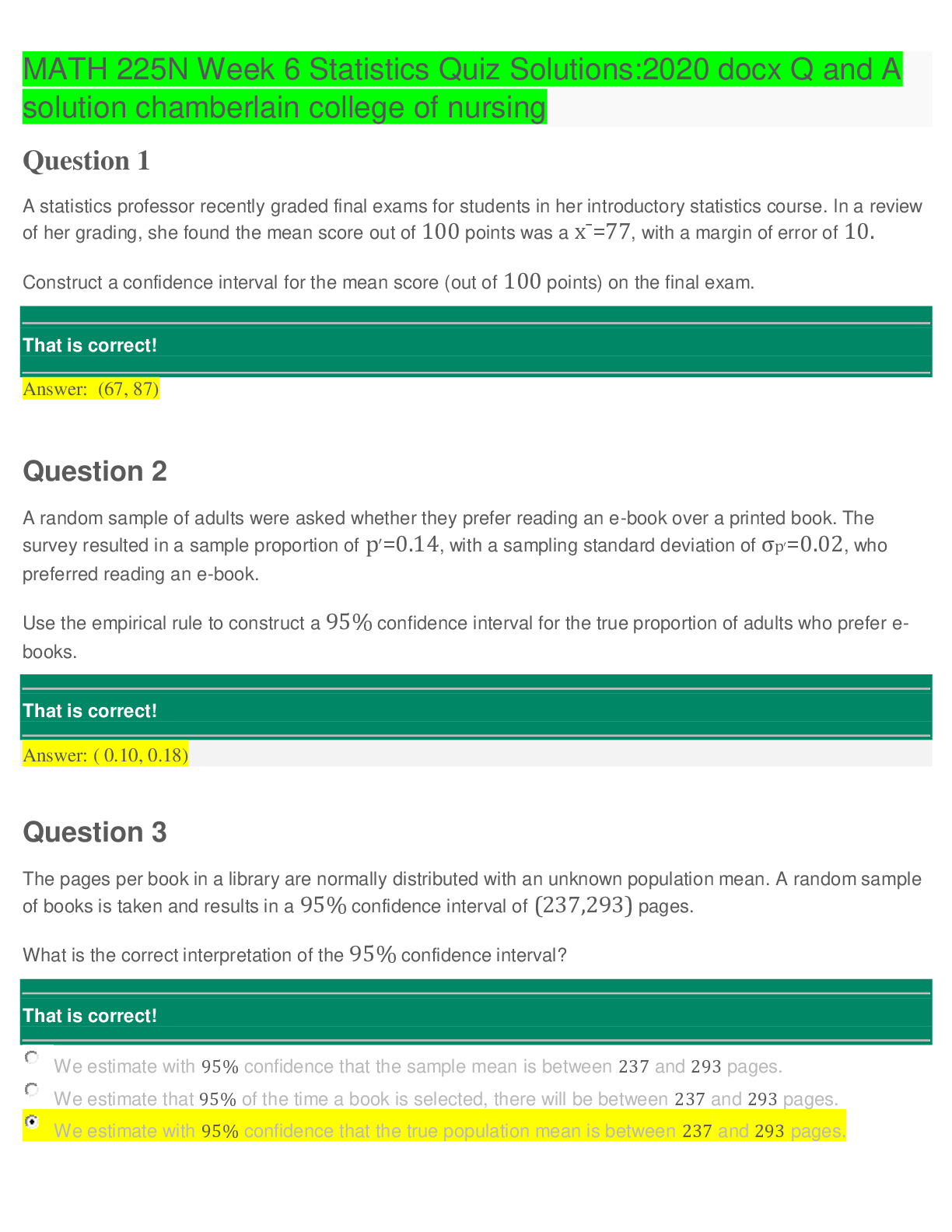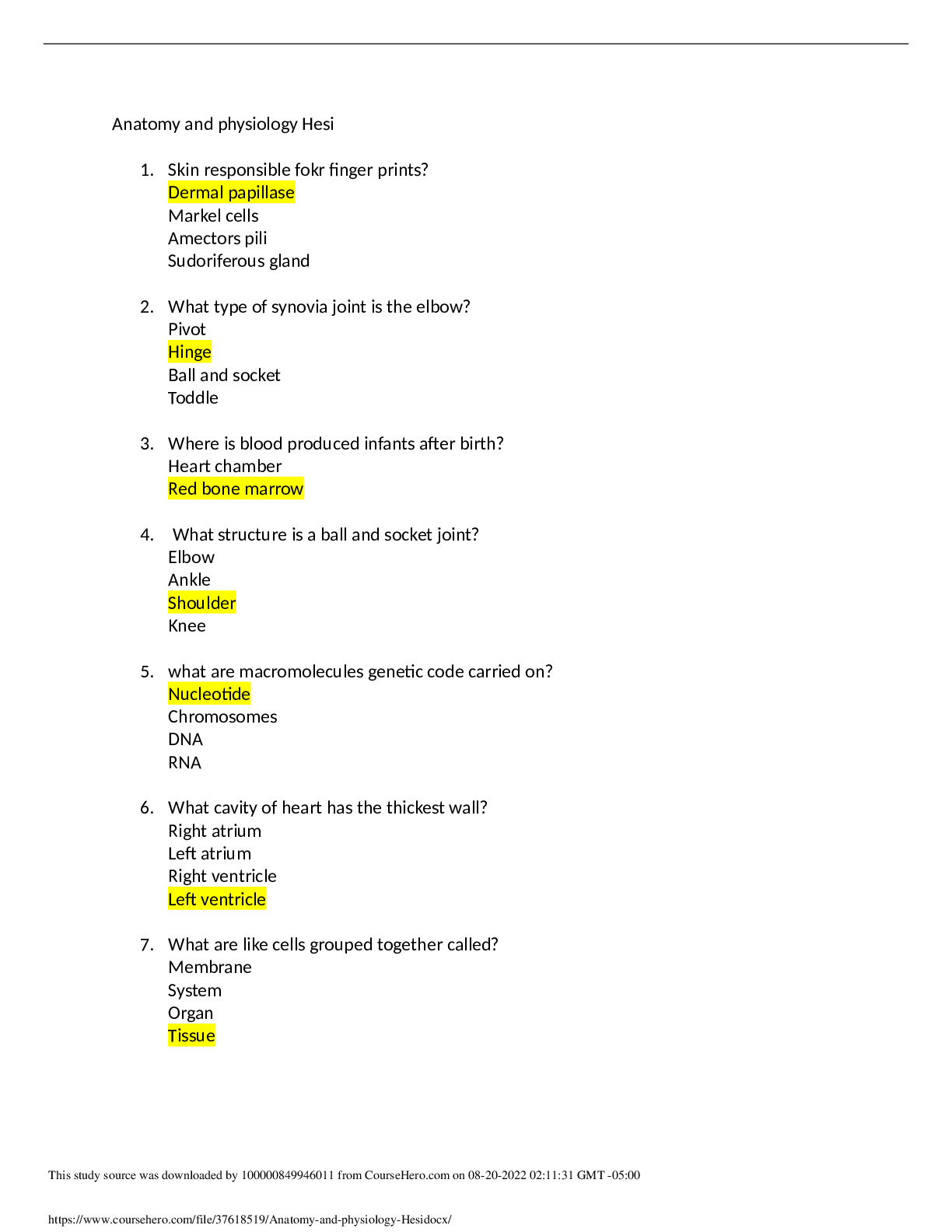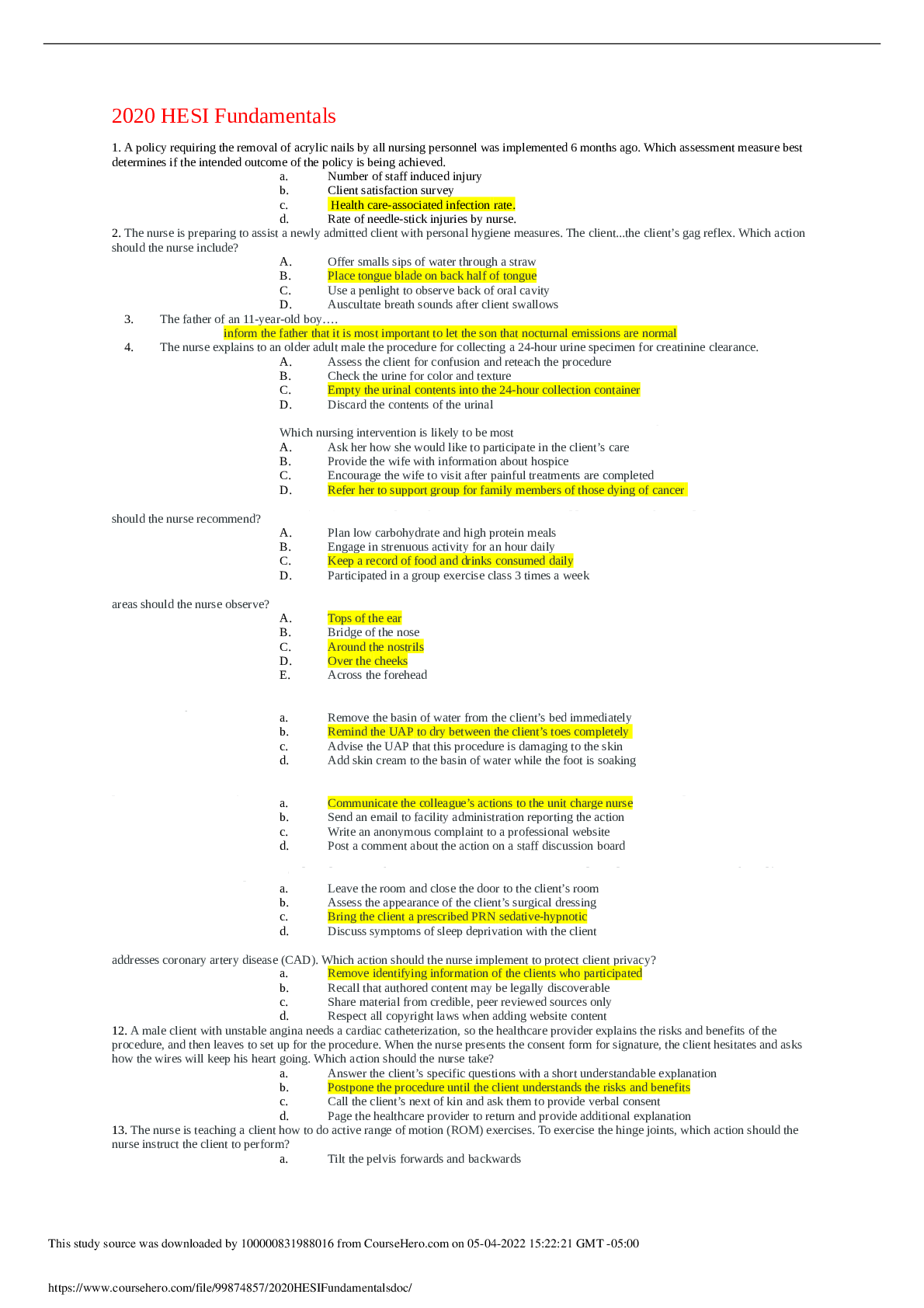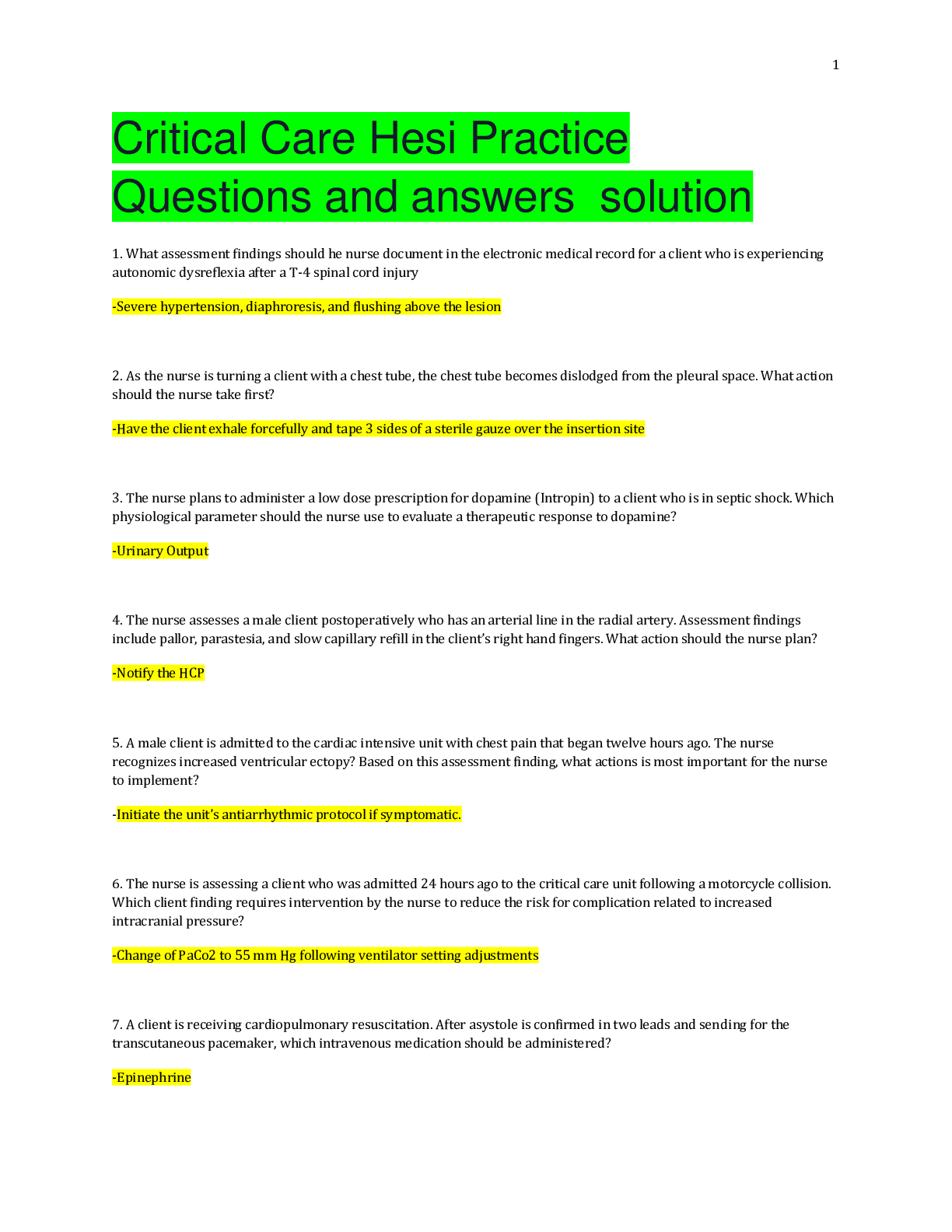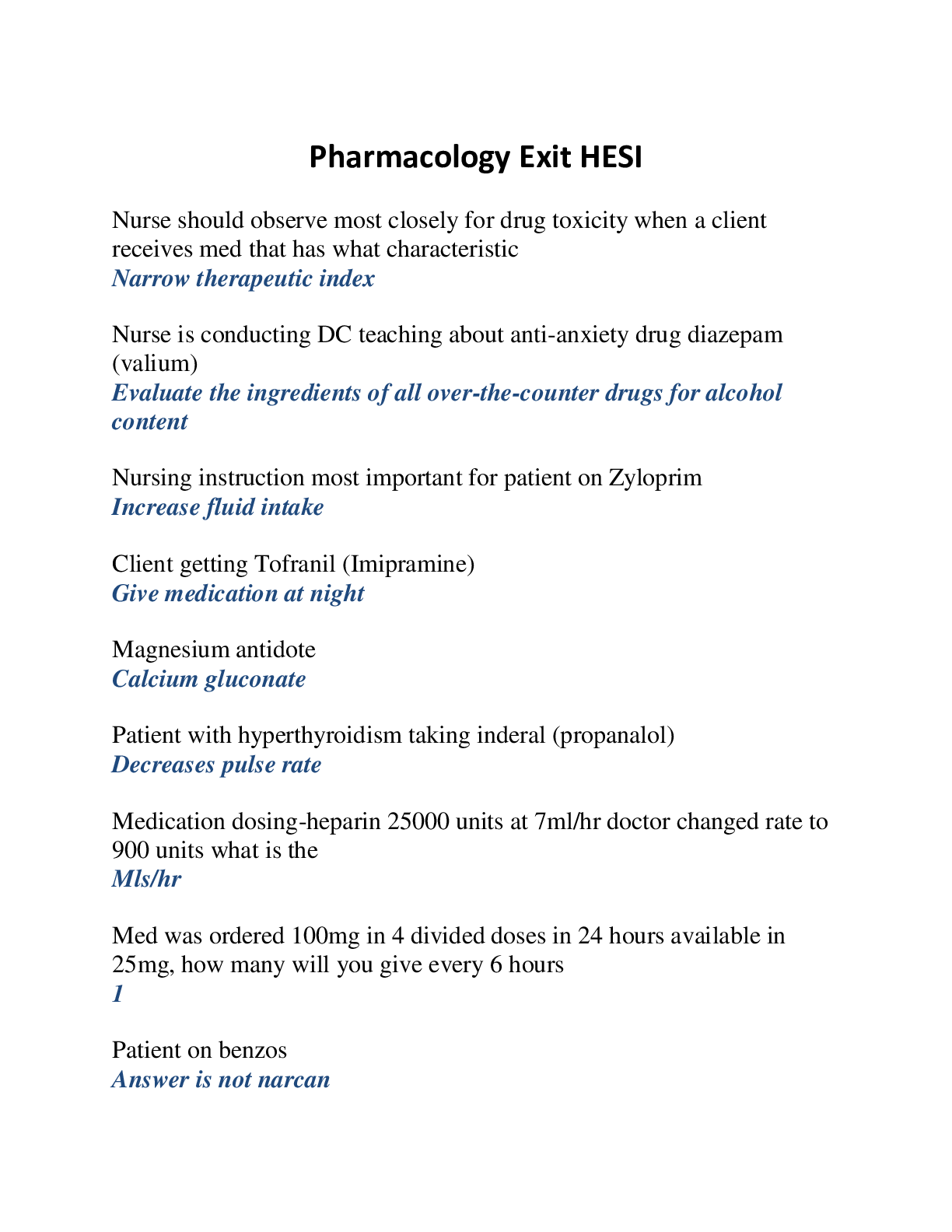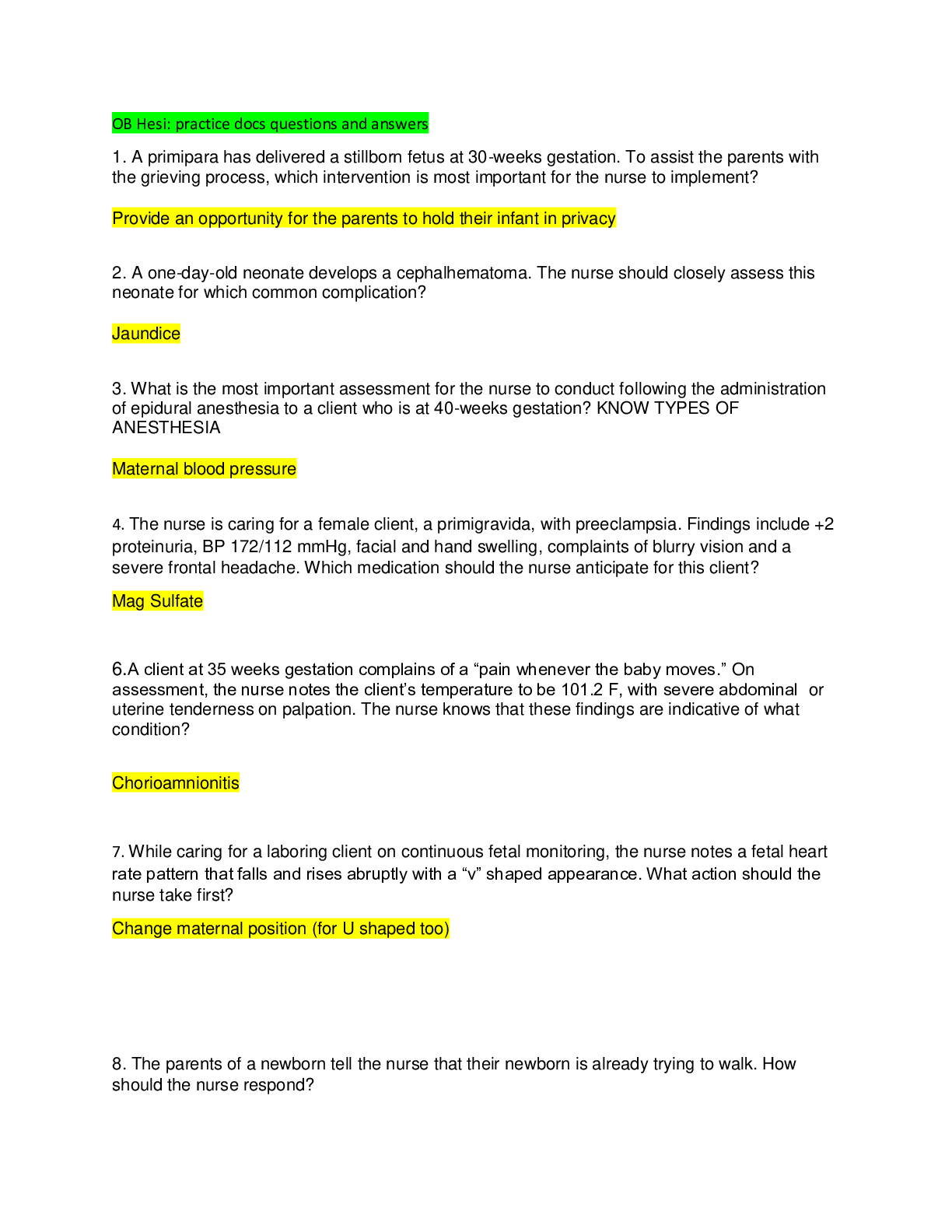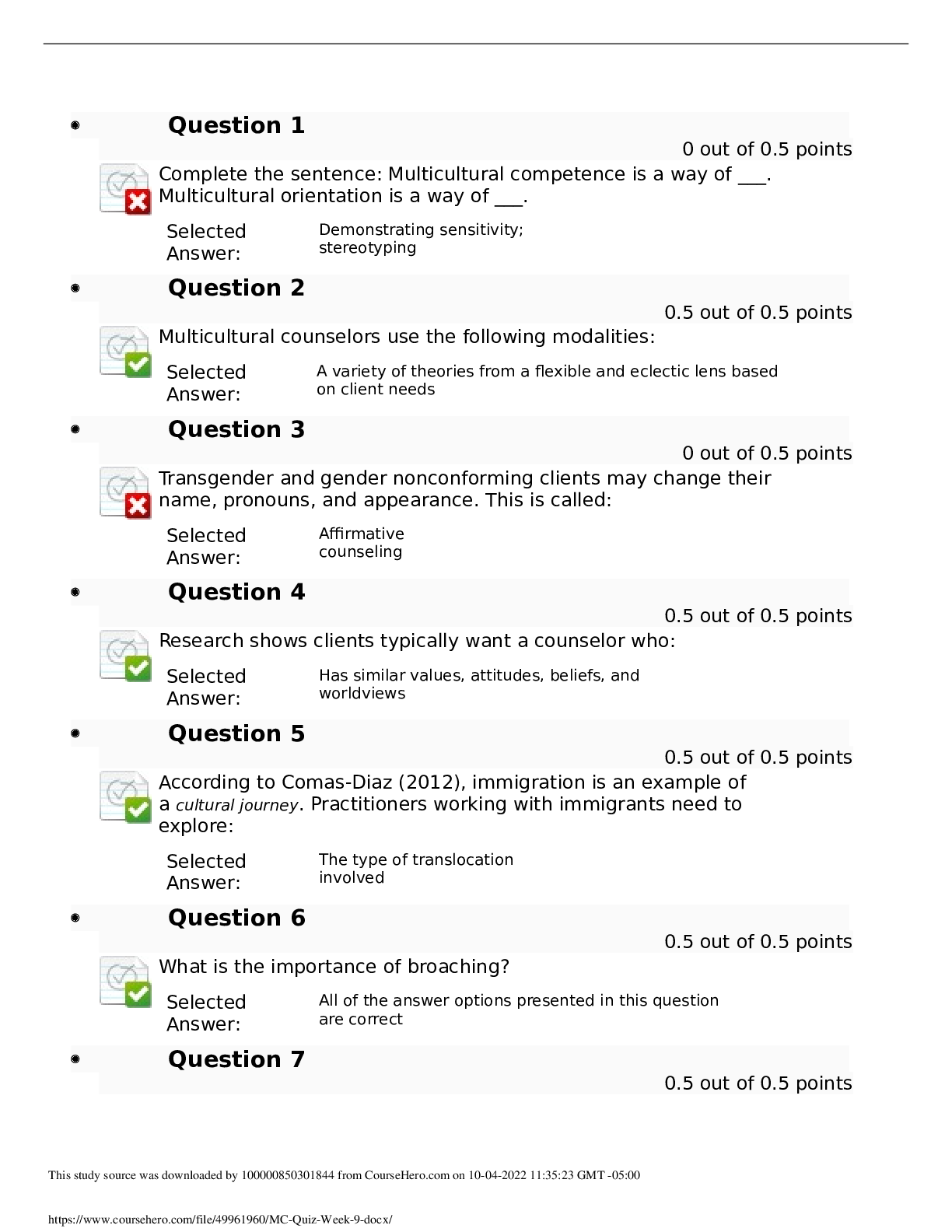*NURSING > QUESTIONS & ANSWERS > NR283 Patho Quiz Week 9 solved solution latest update 2020 (All)
NR283 Patho Quiz Week 9 solved solution latest update 2020
Document Content and Description Below
NR283 Patho Quiz Week 9 solved solution latest update 2020 • Question 1 1 out of 1 points If a patient’s posterior pituitary is removed, which hormone would the nurse expect to decrease? ... • Question 2 1 out of 1 points A 30-year-old male presents to his primary care provider reporting visual disturbances. CT reveals a pituitary tumor and lab tests reveal elevated prolactin. He is diagnosed with prolactinoma. Which of the following treatments would the nurse help implement? • Question 3 1 out of 1 points A patient wants to know what can cause ACTH to be released. How should the nurse respond? • Question 4 1 out of 1 points A 25-year-old female with Graves disease is admitted to a medical-surgical unit. Palpation of her neck would most likely reveal: • Question 5 1 out of 1 points A nurse is preparing to teach a patient about Addison disease. Which information should the nurse include? The most common cause of Addison disease is: • Question 6 1 out of 1 points A 30-year-old male is diagnosed with a hormone-secreting tumor of the pancreas alpha cells. Which of the following would the nurse expect to be most likely increased in this patient? • Question 7 1 out of 1 points A 50-year-old female presents with lightheadedness and overall abnormal feelings. Hyperaldosteronism is diagnosed. Which of the following symptoms would the nurse expect? • Question 8 1 out of 1 points Visual disturbances are a common occurrence in patients with untreated Graves disease. The endocrinologist explains to the patient that the main cause of these complications is: • Question 9 1 out of 1 points A 25-year-old male presents to his primary care provider reporting changes in facial features. CT scan reveals a mass on the anterior pituitary, and lab tests reveal severely elevated growth hormone (GH). Which of the following would the nurse also expect to find? • Question 10 1 out of 1 points A 12-year-old female is newly diagnosed with type 1 DM. When the parents ask what causes this, what is the nurse’s best response? • Question 11 1 out of 1 points A 39-year-old female just had a baby. Which hormone will prevent excessive uterine bleeding? • Question 12 1 out of 1 points An endocrinologist isolated a new hormone and found it to be a water-soluble amine. Which of the following is most like this new hormone? • Question 13 0 out of 1 points When catecholamines are released in a patient, what should the nurse assess for? • Question 14 1 out of 1 points A 35-year-old female with Graves disease is admitted to a medical-surgical unit. While the nurse is reviewing the lab tests, which results would the nurse expect to find? • Question 15 1 out of 1 points A 50-year-old male patient presents with polyuria and extreme thirst. He was given exogenous ADH. For which of the following conditions would this treatment be effective? • Question 16 1 out of 1 points A 19-year-old female with type 1 DM was admitted to the hospital with the following lab values: serum glucose 500 mg/dl (high), urine glucose and ketones 4+ (high), and arterial pH 7.20 (low). Her parents state that she has been sick with the “flu” for a week. Which of the following statements best explains her acidotic state? • Question 17 1 out of 1 points A 45-year-old female has elevated thyroxine production. Which of the following would accompany this condition? • Question 18 0 out of 1 points Diabetes insipidus, diabetes mellitus (DM), and SIADH share which of the following assessment manifestations? • Question 19 0 out of 1 points If a patient had a problem with the hypothalamus, which of the following hormones would be affected? • Question 20 1 out of 1 points A 54-year-old patient with pulmonary tuberculosis (lung infection) is evaluated for syndrome of inappropriate ADH secretion (SIADH). Which of the following electrolyte imbalances would be expected in this patient? • Question 21 1 out of 1 points When insulin binds to its receptors on muscle cells, an increase in glucose uptake by the muscle cells occurs. This is an example of a _____ effect by a hormone. • Question 22 1 out of 1 points When a patient wants to know what most commonly causes hypoparathyroidism, how should the nurse reply? It is most commonly caused by: • Question 23 1 out of 1 points A 35-year-old female took corticosteroid therapy for several months. Which of the following would the nurse expect to find? • Question 24 1 out of 1 points A 12-year-old male is newly diagnosed with type 1 DM. Which of the following tests should the nurse prepare the patient to best confirm the diagnosis? • Question 25 1 out of 1 points A 40-year-old male undergoes surgery for a PTH-secreting tumor in which the parathyroid is removed. Which of the following would the nurse expect following surgery? • Question 26 1 out of 1 points A 3-year-old male was diagnosed with congenital hypothyroidism. The parents ask the nurse if left untreated what will happen. What is the nurse’s best response? If left untreated, the child would have: • Question 27 0 out of 1 points While planning care for a patient from general anesthesia, which principle should the nurse remember? A side effect of some general anesthetic agents is _____ diabetes insipidus. • Question 28 1 out of 1 points A patient has researched lipid-soluble hormones on the Internet. Which information indicates the patient has a good understanding? Lipid-soluble hormone receptors cross the plasma membrane by: • Question 29 1 out of 1 points Which principle should the nurse include while planning care for a patient with an ADH problem? ADH release from the posterior pituitary is stimulated by: • Question 30 0 out of 1 points A 30-year-old male was diagnosed with hypothyroidism. Synthesis of which of the following would decrease in this patient? • Question 31 1 out of 1 points A nurse recalls insulin has an effect on which of the following groups of electrolytes? • Question 32 1 out of 1 points A 15-year-old female presents with breast discharge, dysmenorrhea, and excessive excitability. Tests reveal that all her pituitary hormones are elevated. What does the nurse suspect as the most likely cause for these assessment findings? • Question 33 1 out of 1 points A patient has high levels of hormones. To adapt to the high hormone concentrations, the patient’s target cells have the capacity for: • Question 34 1 out of 1 points A nurse is teaching a patient about insulin. Which information should the nurse include? Insulin is primarily regulated by: • Question 35 1 out of 1 points A 22-year-old female has a low level of TSH. What condition does the nurse expect the patient is experiencing? [Show More]
Last updated: 1 year ago
Preview 1 out of 8 pages
Instant download

Buy this document to get the full access instantly
Instant Download Access after purchase
Add to cartInstant download
Reviews( 0 )
Document information
Connected school, study & course
About the document
Uploaded On
Oct 24, 2020
Number of pages
8
Written in
Additional information
This document has been written for:
Uploaded
Oct 24, 2020
Downloads
0
Views
33




